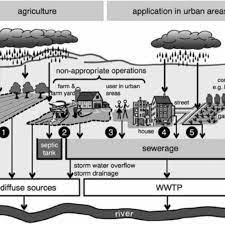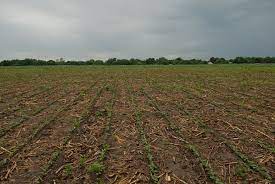Rainfall is necessary for the activation of soil-applied herbicides as the downward flow of water transports herbicides to the root zone.
The placement or position of the herbicide moving along the water flow is dependent on the amount of rainfall, amount of moisture in the soil, soil composition, adsorption of the herbicide by soil, speed of adsorption and desorption, permeability and amount of dispersion (Rao, 2011).
Movement of herbicides after rainfall depends on their relative mobility in soil. The herbicides range between those which move freely (moving with a wetting point) to those which are almost immobile.
The herbicides with lowest adsorption coefficients move into the 5 to 10 cm soil layer, while those with higher adsorption coefficients will remain above 5 to 10 cm depth.
However, herbicides with lower adsorption coefficients move readily into the root zone, in which case herbicide selectivity is based on depth protection. Herbicides with higher adsorption coefficients remain in the surface layer, although these may flow through the large soil pores and cracks to the root zone even with a moderate rainfall (Rao, 2011).
For most soil-applied herbicides, rainfall shortly after application is important for good herbicidal activity. Soil incorporation tends to improve weed control under all climatic conditions for herbicides that are highly volatile and strongly adsorbed by soil or absorbed into plants primarily by roots.
Read Also : Roles of Producers and Corporations in Waste Management
In conclusion, the prediction of the movement and the fate of herbicides in soils constitute an important strategy in limiting their environmental impact.

The understanding of soil phase characteristics and the mechanisms involved in herbicide transformation can help to understand the fate of herbicide in soil.
The physicochemical properties of herbicides affect their behaviour in soil and regulate their interaction mechanisms with organic and inorganic soil phases.
Adsorption of herbicides by soil particles occurs through a number of mechanisms including hydrophorbic partitioning, hydrogen bonding, cation and water bridgings, protonation, cation exchange, covalent bonding, etc;
Several factors affecting the adsorption of herbicides by soils include: a) type of clay colloid, b) soil organic matter, c) soil pH, d) moisture content, e) chemical nature of the herbicide and f) leaching;
Herbicide transport in soil occurs through diffusion and mass flow transport; and Rainfall is necessary for the activation of soil-applied herbicides.

